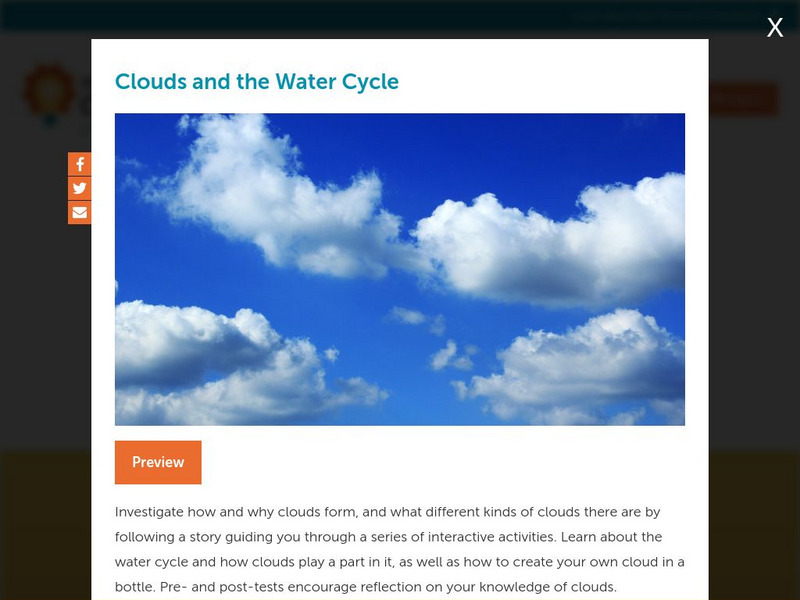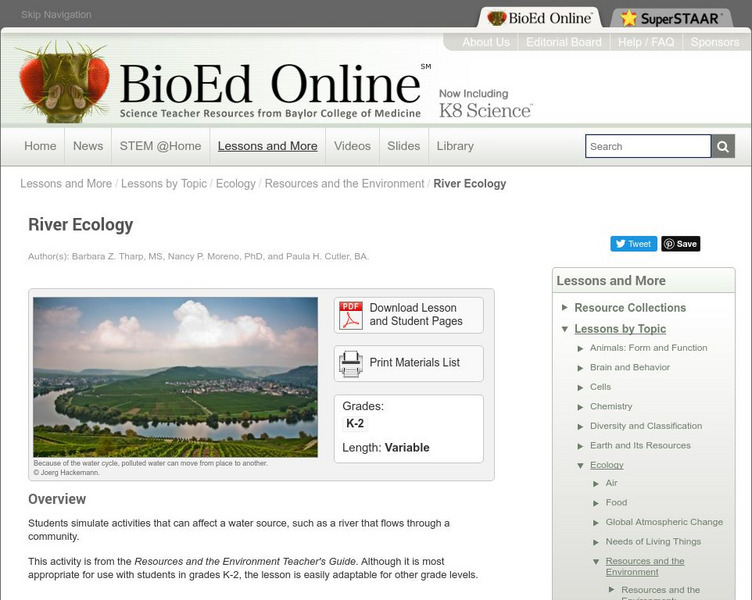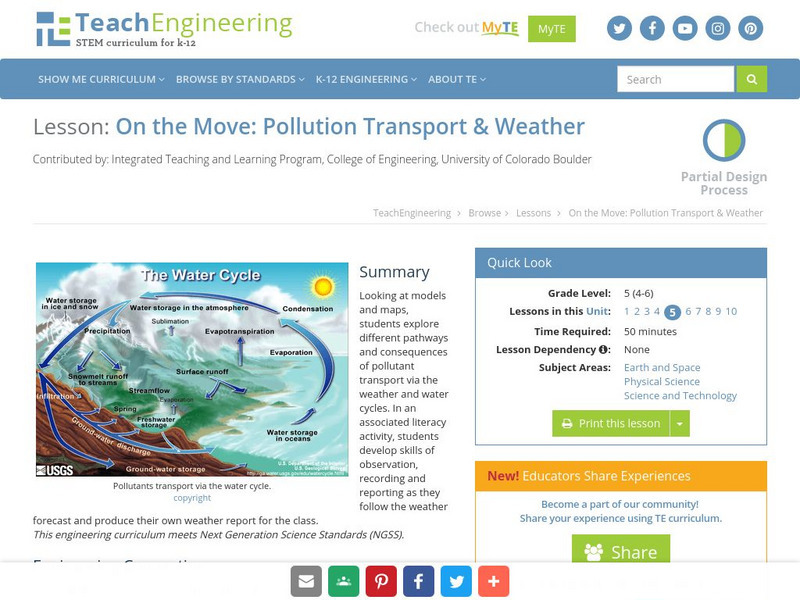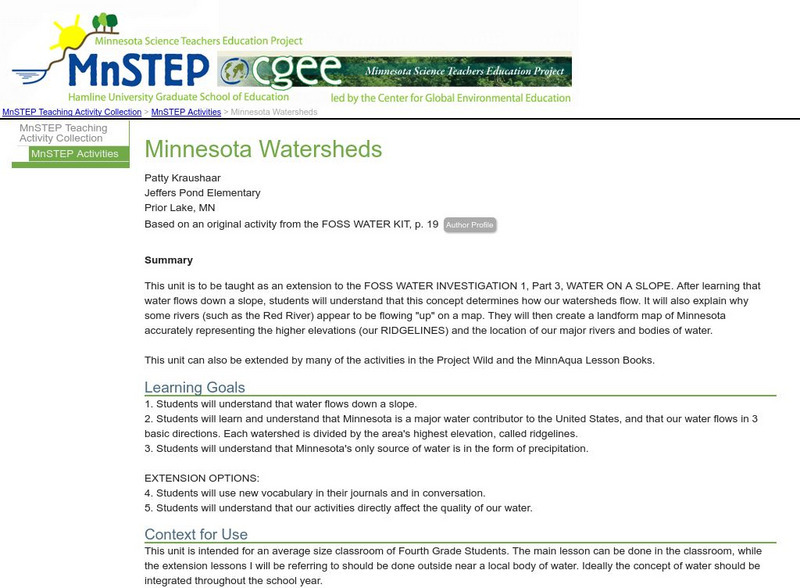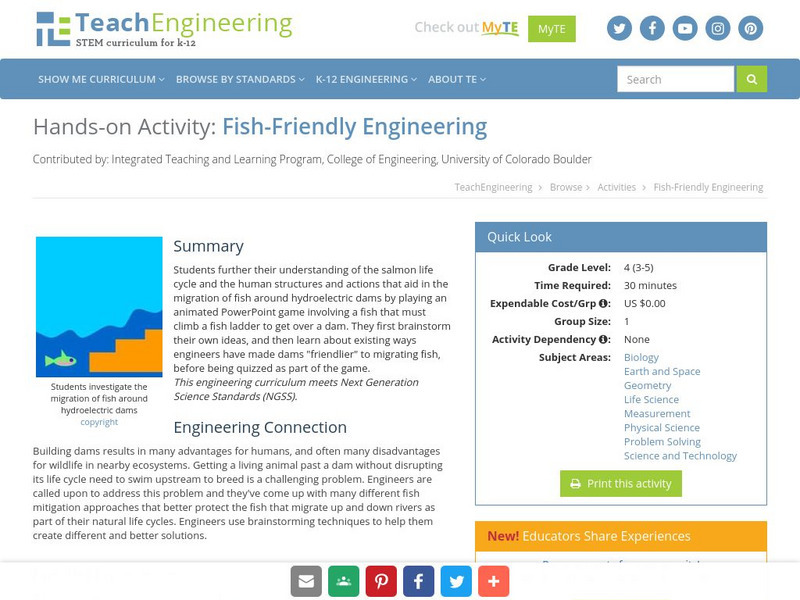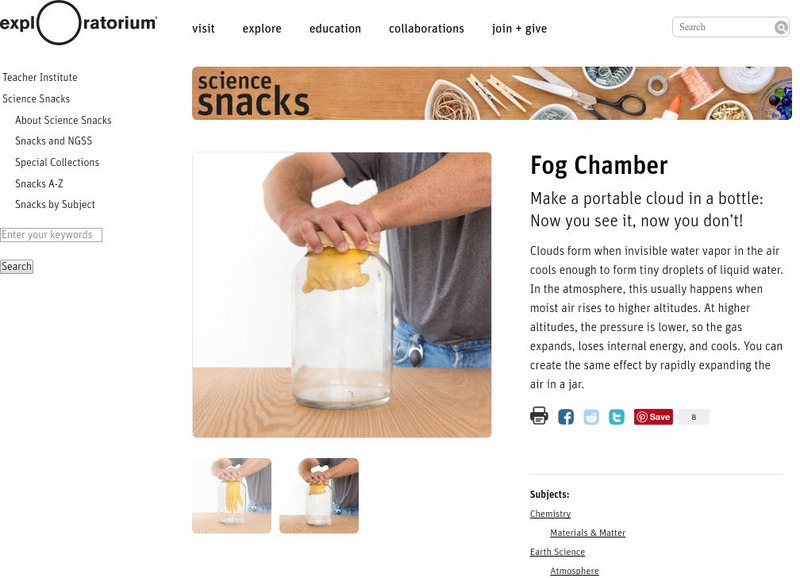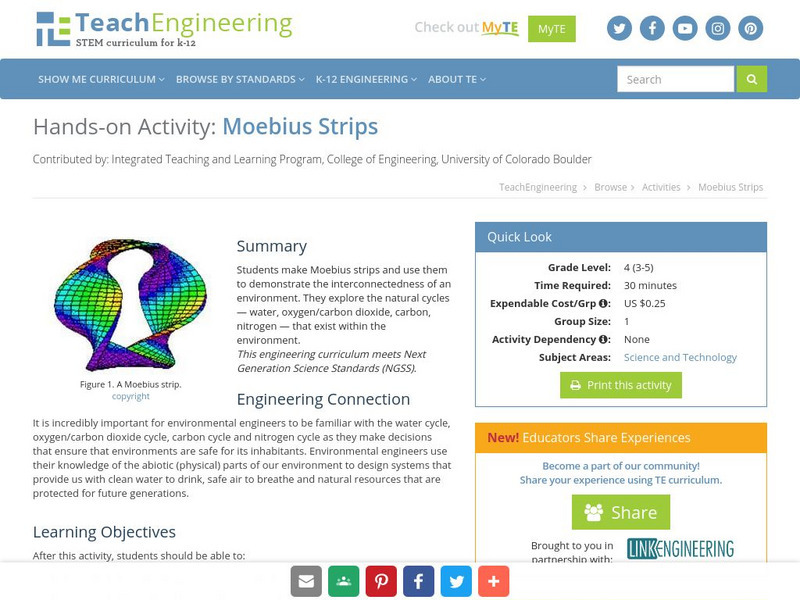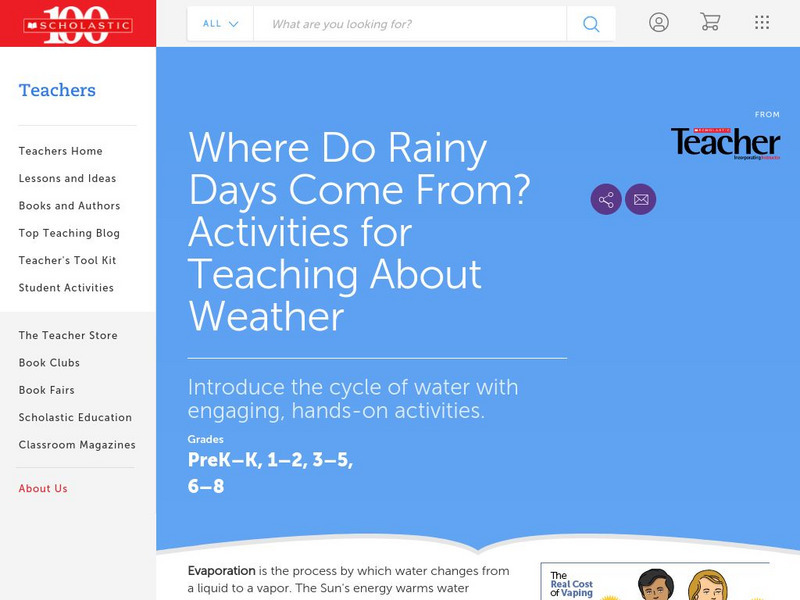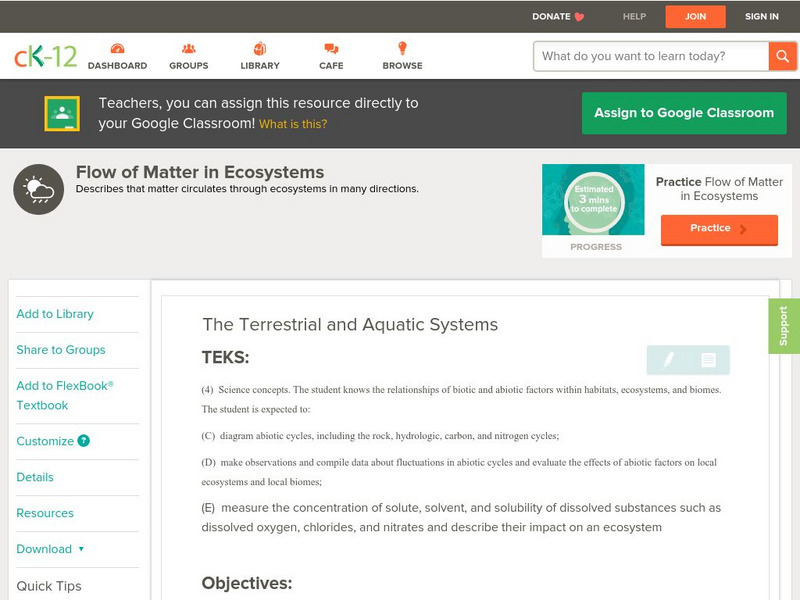Concord Consortium
Concord Consortium: Stem Resources: Beginning Clouds Unit
Explore how clouds are formed with the computer-based model in these interactive activities. Also learn about clouds part in the water cycle. Activity includes pre- and post-tests which can be saved and graded by the teacher.
TeachEngineering
Teach Engineering: Urban Stormwater Management
Through the two lessons in this unit, students are introduced to green infrastructure and low-impact development technologies. Student teams take on the role of stormwater engineers through five associated activities.
BioEd Online
Bio Ed Online: River Ecology
In this lesson plan students are required to simulate activities that can affect a water source, such a river as it flows from one place to another within a community.
Utah Education Network
Uen: Trb 4:1 Investigation 3 Condensation Chambers
Activities will help with understanding the concept of water condensation.
Curated OER
[Water Cycle Graphic]
This page from the University of Washington has an excellent diagram of the water cycle. There are 8 water cycle hands on activities on the bottom of the page. Also there is a link to a teacher reference page.
US Geological Survey
Lake Pontchartrain Basin Foundation: Liquid Assets: Our Water Resources
Lessons designed to show students how water quality, water pollution, and personal lifestyle are related. Lessons help students understand the importance of our water resources and water quality. Students will explore the nonpoint and...
TeachEngineering
Teach Engineering: On the Move
Looking at models and maps, students explore different pathways and consequences of pollutant transport via the weather and water cycles. In an associated literacy activity, students develop skills of observation, recording and reporting...
Science Education Resource Center at Carleton College
Serc: Minnesota Watersheds
In this activity, students will understand that water flows down a slope and determines how watersheds flow. They will also learn that water flows in three basic directions and that each watershed is divided by the area's higher...
TeachEngineering
Teach Engineering: Making "Magic" Sidewalks of Pervious Pavement
Students use everyday building materials- sand, pea gravel, cement and water- to create and test pervious pavement. Groups are challenged to create their own pervious pavement mixes, experimenting with material ratios to evaluate how...
TeachEngineering
Teach Engineering: Fish Friendly Engineering
Students further their understanding of the salmon life cycle and the human structures and actions that aid in the migration of fish around hydroelectric dams by playing an animated PowerPoint game involving a fish that must climb a fish...
Government of Alberta
Alberta Environment: Focus on Groundwater: Groundwater Basics [Pdf]
This article explains in detail what groundwater is, why it is important, human activities that affect its quality and quantity, and things we can do to protect it.
Exploratorium
Exploratorium: Science Snacks: Fog Chamber
Create a fog chamber by rapidly expanding air in a jar in this activity. This activity uses a match in a jar to bunch water into tiny droplets.
Environmental Education for Kids
Eek!: Teacher Resources: Groundwater Study Guide [Pdf]
This study guide is designed to help students begin thinking about groundwater - where it comes from, why it's important, and how it can be conserved and protected. The guide includes a brief overview of groundwater, a glossary, and...
University Corporation for Atmospheric Research
Ucar: Introduction to the Atmosphere
A detailed overview of the Earth's atmosphere, with explanations about atmospheric properties, the structure of the atmosphere, its four layers, atmospheric processes, energy heat transfer, conduction and convection, and radiation. All...
University of Illinois
University of Illinois: Illinois State Water Survey: Nitrogen Cycle: Human Impact on the Nitrogen Cycle
An overview of the impact of human activities on the environment and how those actions effect the nitrogen cycle.
TeachEngineering
Teach Engineering: A Guide to Rain Garden Construction
Student groups create personal rain gardens planted with native species to provide a green infrastructure and low-impact development technology solution for areas with poor drainage that often flood during storm events.
NOAA
Noaa: The Ocean's Role in Weather and Climate
A collection of resources - interactive activities and teacher tutorials - on the impact the ocean has on weather and climate.
Science Education Resource Center at Carleton College
Serc: Mn Step: Watersheds Urban and Rural
In this activity students build models of two types of watersheds, one urban and one rural. They will then simulate rain or the water cycle and observe what happens to the 'soil.' This activity leads to discussions about the water cycle,...
TeachEngineering
Teach Engineering: Dams
Through eight lessons, students are introduced to many facets of dams, including their basic components, the common types (all designed to resist strong forces), their primary benefits (electricity generation, water supply, flood...
TeachEngineering
Teach Engineering: Moebius Strips
In this activity, students make Moebius strips and use them to demonstrate the interconnectedness of an environment. They will explore the natural cycles (water, oxygen/carbon dioxide, carbon, nitrogen) within the environment.
University Corporation for Atmospheric Research
Ucar: Modeling Tree Transpiration
In this activity, young scholars will observe and measure the water given off through transpiration by a plant in a small terrarium.
Scholastic
Scholastic: Where Do Rainy Days Come From?
Find out more about rainy days when you check out this resource, which features hands-on interactive activities, experiments, fun facts, and more.
ClassFlow
Class Flow: Rivers 2
[Free Registration/Login Required] In this lesson students evaluate the water cycle and how rivers erode, transport, and deposit materials to produce physical features. Many slides and aerial photos of flooding and riverbanks are...
CK-12 Foundation
Ck 12: Earth Science: Flow of Matter in Ecosystems
[Free Registration/Login may be required to access all resource tools.] In this module, students will learn about the cycles of nature (water, carbon, nitrogen, and phosphorus) that support the flow of nutrient matter through an...


